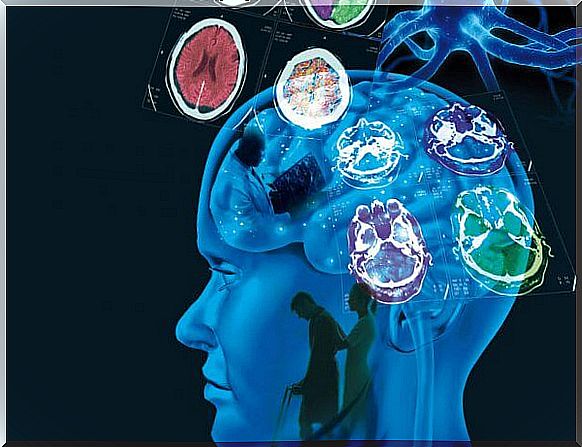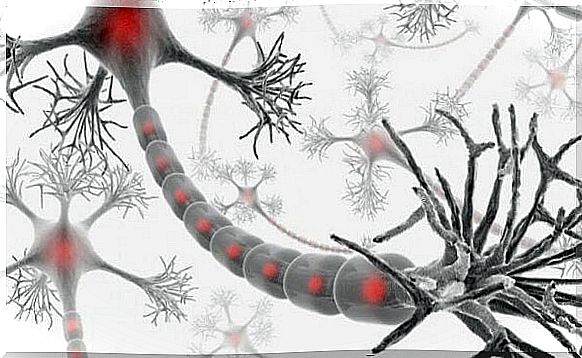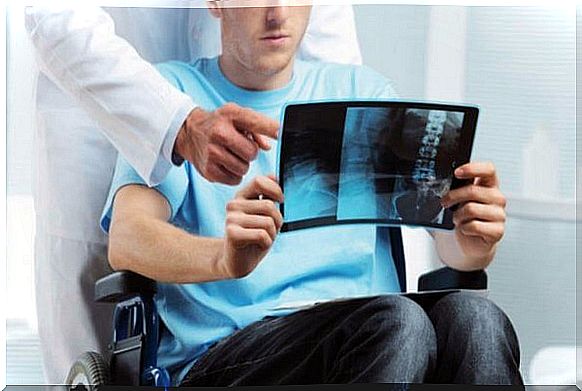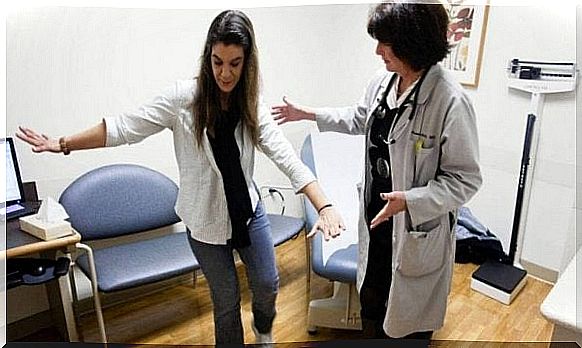Multiple Sclerosis: Causes, Symptoms And Treatment

Multiple sclerosis (MS) is a chronic disease of the central nervous system. It is found all over the world. It is the most common cause of neurological changes in young adults and middle-aged adults, especially women.
The myelin chain consists of proteins and fats. It protects and covers the nerve fibers in the central nervous system. It also facilitates the conduction of electrical impulses between the fibers.
People with multiple sclerosis have an aggravated myelin chain. And the aggravation can cause scars (sclerosis ). Researchers also call these damaged areas demyelinating plaques.
The myelin chain not only protects the nerve fibers. It also helps them to function properly. Damage to the myelin chain drastically reduces the nerve’s ability to perform impulses. Fortunately, damage to myelin is often reversible.

What causes multiple sclerosis?
The etiology of multiple sclerosis is unknown. Although the cause of multiple sclerosis is not clear, we know that the disease involves several systems. Among the causes are immune and hereditary factors, as well as infections.
The exact role of viral infections in the onset and progression of the disease is unknown. Nevertheless, researchers have studied several viruses in relation to the disease.
They relate the Epstein-Barr virus to demyelination (destruction of the myelin chain). There is also evidence that children exposed to the virus are more prone to the disease.
Researchers have studied viruses most of all environmental factors. They think they are one of the triggering or decisive factors of the disease.
Experts suspect that the viruses modify oligodendrocytes in childhood. The viruses facilitate that they later have an abnormal immune response. Then this changes the correct myelination.
Genetic predisposition to the disease is relatively clear. In fact, studies of identical twins show that the risk of suffering from multiple sclerosis is 31%. With twins, the risk is close to 5%.
Symptoms of multiple sclerosis
The onset of symptoms may be so mild that the patient does not feel the need to see a doctor. The most common symptoms in the beginning are:
- Weakness in one or more limbs
- Unclear vision
- Changes in sensitivity
- Double vision
- Problems coordinating movements (ataxia)
Weakness in the extremities is also common. Many people with multiple sclerosis feel exhausted when exercising and have difficulty climbing stairs. They also lose dexterity and muscle tone. These symptoms tend to work gradually.
Fatigue: The most common symptom
Fatigue or exhaustion is the most common symptom of multiple sclerosis. It affects 2/3 of the patients. Half of them describe it as the worst symptom because it particularly affects the quality of life.
Fatigue dramatically and significantly reduces the quality of life for people with multiple sclerosis. Therefore, it is therefore important to monitor. However, it is difficult to administer and interpret because the perception of fatigue is subjective.
Energy loss affects motor skills as much as cognitive skills. We must also distinguish between weakness, energy loss and difficulty concentrating.
Therefore, physicians must make a differential diagnosis of multiple sclerosis fatigue with other conditions. Depression, motor disorders, thyroid problems or side effects of epilepsy medications or immunosuppressive drugs may have similar clinical features.

Flare-up
Flare-ups (relapses, seizures, exacerbations) are very typical of multiple sclerosis. They are symptoms of neurological dysfunction that last more than 24 hours.
These recurrences are episodes that affect distinct parts of the central nervous system and are separated by at least one month. On the other hand, when the symptoms disappear, we classify it as a remission. Remission is an improvement or disappearance of signs and symptoms for at least 24 hours.
Peripheral symptoms
The following symptoms support the multiple sclerosis diagnosis when presented clinically. They are:
- L’hermitte’s Sign: the patient feels an electric charge go down their entire spine. Sometimes it goes all the way to the arms or legs. Bending the neck forward triggers the feeling.
- Sensitivity to heat.
- Uhthoff’s phenomenon: increased body temperature. External factors (summer, a hot shower, smoking) or internal factors (fever, intense exercise, menstruation) can both trigger this symptom.
- Paroxysmal seizures : Paroxysmal movement disorders occur suddenly and intermittently. They do not last very long, but can appear sometimes or many times a day in short bursts. The most common type of paroxysmal symptom is paroxysmal dystonia.
Treatment of multiple sclerosis
At this time, there is unfortunately no cure for MS. Nor is it a treatment that can positively affect the natural clinical course of the disease.
In the long run, the goal is to try to reduce the number of flares. Doctors also help their patients to alleviate the effects of the disease and the development of the disability.
To do this, they use immunosuppressants (azathioprine, cyclophosphamide, methotrexate) and interferons (alpha).
Doctors use high doses of corticosteroids for short periods (3-5 days) to treat flares. Proper identification of flares is the key to making a diagnosis and finding the right treatment.
The symptomatology of a flare-up is one or more lesions caused by an inflammatory process. That process is located in the central nervous system. And corticosteroids are the preferred drug for flares because they target inflammation.
To treat the symptoms of MS
We can summarize symptomatic treatment as follows:
- Spasticity : baclofen, diazepam, dantrolene sodium…
- Fatigue : amantadine, modafinil, methylphenidate…
- Pain : carbamazepine, phenytoin, gabapentin, pregabalin…
- Bladder hyperreflexia : oxybutynin, bethanechol…
- Cognitive deficits : donepezil, interferon beta, memantine…

Rehabilitation
Rehabilitation is extremely important. The basic goal is to prevent disability in the patient. Or, at the very least, reduce it as much as possible.
Therapists teach patients to learn new skills and maximize their healthy systems. That way, they will be able to maintain some independence.
It is also important to adapt or change their social and work environments. In addition, psychological support for the patient, family and caregivers is crucial.
Experts recommend an interdisciplinary rehabilitation treatment tailored to the individual. People suffering from MS can improve their quality of life in terms of health and ability to perform daily activities. In fact, many organizations for people with MS offer this type of treatment focused on holistic rehabilitation.
Bibliography
Poser CM, Brinar VV. Diagnostic Criteria for Multiple Sclerosis; FEDEM, Rev 14, 1–19.
Harrison: Principles of Internal Medicine, Vol. 2; Editorial Interamericana, 13th edition.









